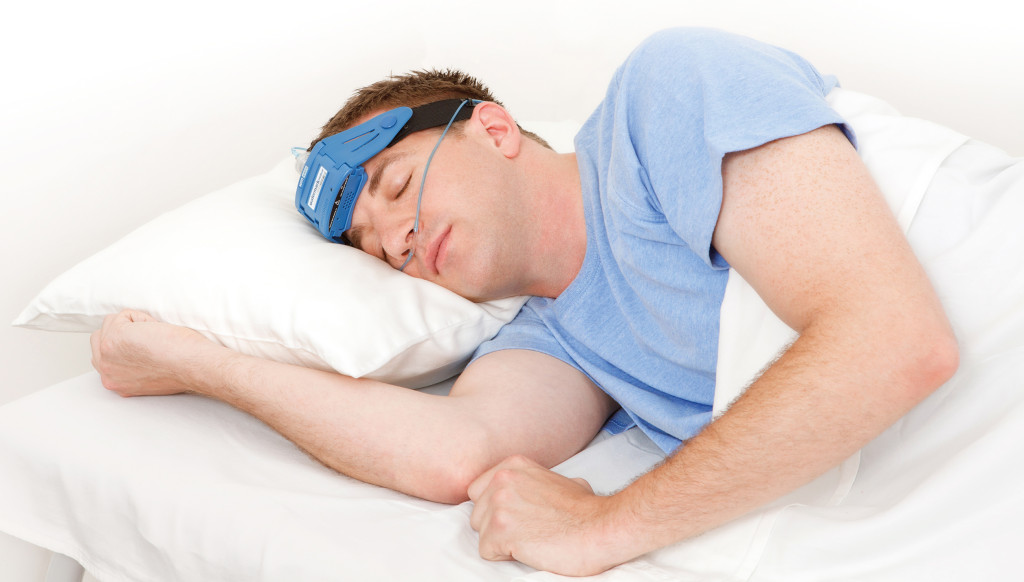
6 The estimated prevalence of RLS is 5% to 15%. Usually associated with leg discomfort, RLS is relieved with movement prolonged bed rest during hospitalization can worsen it. RLS is characterized by an urge to move the legs while at rest, especially at night. 4,5 This sleep fragmentation and oxygen desaturation causes snoring or gasping during sleep and can lead to hypertension, cardiac arrhythmias, cognitive decline, and increased mortality. OSA, which occurs in 24% of men and 9% of women in the United States, is characterized by repetitive episodes of breathing pauses (apnea) and hypoventilation (hypopnea) that precipitate brief awakenings. Sleep disorders include obstructive sleep apnea (OSA), restless legs syndrome (RLS), and periodic limb movement disorder (PLMD). Multiple factors can lead to insomnia in hospitalized patients, including sleep disorders, psychological and physical factors, certain medical conditions, medications, environment, clinical activities, and poor sleep hygiene. 1 In a longitudinal observational study of insomnia prevalence in 280 hospitalized elderly patients, 21% reported new-onset insomnia, 38% reported moderate or severe insomnia, and 38% reported sleep disturbances during hospitalization, and severe morbidity, pain, and impaired functional status were significantly associated with insomnia.

Interestingly, when the medical records were reviewed, no patient had physician documentation of insomnia symptoms. 2 In one study, 47% of 222 patients reported that they had insomnia and/or excessive daytime somnolence while in the hospital. 1 It is characterized by an increase in sleep latency (trouble falling asleep), a decrease in sleep maintenance (trouble staying asleep), or a decline in sleep quality (less time sleeping compared with time spent in bed). Insomnia.Insomnia is a common complaint in hospitalized patients, especially the elderly. National Heart, Lung, and Blood Institute. Clinical management of behavioral insomnia of childhood. The extraordinary importance of sleep: the detrimental effects of inadequate sleep on health and public safety drive an explosion of sleep research. Prevalence of causes of insomnia in primary care: a cross-sectional study. doi:10.5664/jcsm.7954Īrroll B, Fernando A 3rd, Falloon K, Goodyear-Smith F, Samaranayake C, Warman G. An objective measure of drowsy driving: are we there yet? J Clin Sleep Med. Comparative effectiveness of cognitive behavioral therapy for insomnia: a systematic review. Mitchell MD, Gehrman P, Perlis M, Umscheid CA. Prevalence of chronic insomnia in adult patients and its correlation with medical comorbidities.

Use of electronics at bedtime: These include TV, cell phones, gaming devices, and/or computers, as the artificial light inhibits sleep and promotes a restless mind.

Lack of regular exercise or physical activity.Frequent travel to different time zones: While jet lag is not insomnia, frequent jet lag can develop into prolonged sleep issues such as insomnia.Frequent environmental disturbances: These include light, temperature (too cold or too hot), or noise disrupting sleep.Family history: Researchers believe there may be a genetic component to insomnia as it tends to run in families.Comorbid conditions: These include as obesity, diabetes, lung problems, and heart disease.Being female: Women are more likely to have insomnia than men, particularly during pregnancy, while caring for a newborn, and in menopause.Age: This condition can happen at any time of life but is more common the older you get.


 0 kommentar(er)
0 kommentar(er)
